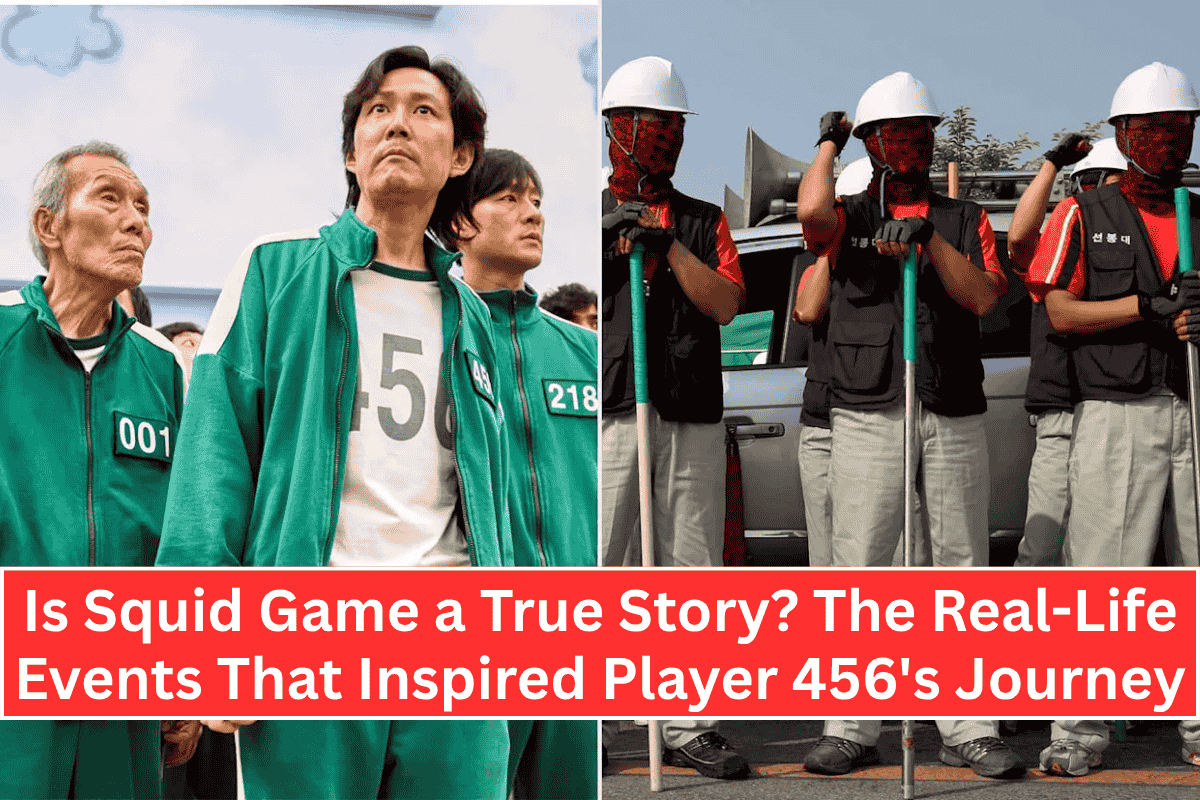Squid Game captivated audiences with its intense, dystopian storylines, which revolve around a group of desperate individuals competing in deadly children’s games for a massive cash prize.
But, while the show’s premise is fictional, Squid Game draws inspiration from real events in South Korean history — specifically the Ssangyong Motor strike — which serves as the backdrop for the protagonist Seong Gi-hun’s (Player 456) character.
In a June 2025 interview with The New York Times, the show’s creator, Hwang Dong-hyuk, reflected on the universal themes that made Squid Game resonate so deeply with audiences. He explained, “We touched something in the zeitgeist through Squid Game,” noting that the economic pressures and crises depicted in the series are relatable to people worldwide.
Hwang also emphasized the significance of Gi-hun’s struggle, based on the real-life turmoil many face when navigating the relentless competition in modern society.
Squid Game and the Ssangyong Motor Strike
While Squid Game is not directly based on a true story, it was inspired by the 2009 Ssangyong Motor strike — a major labor dispute in South Korea. The strike escalated into violent confrontations with the police, which had a profound effect on both the workers involved and their families. Hwang Dong-hyuk referenced this historical event when crafting Gi-hun’s origin story in the show.
Gi-hun’s backstory is intertwined with the real-world struggles of workers like those at Ssangyong Motor, a major South Korean automaker. In the show, Gi-hun is laid off from Dragon Motor, a plant that mirrors Ssangyong, and becomes part of a strike that turns violent.
This sequence in the show, particularly in Episode 5 of Season 1, echoes the real-life clashes between Ssangyong workers and the police.
The Ssangyong Motor Strike: A Brief Overview
In January 2009, Shanghai Automotive Industry Corporation (SAIC), the controlling shareholder of Ssangyong Motor, filed for bankruptcy. This triggered mass layoffs at Ssangyong, with around 2,000 workers resigning voluntarily.
However, in April 2009, the company announced it would cut 36% of its workforce, including 970 employees from the Pyeongtaek factory.
As a response, workers initiated a 77-day sit-in protest that turned into one of the most violent labor disputes South Korea had seen in decades. Protestors were met with heavy police action, including rubber bullets and tasers, leading to clashes that mirrored the brutality of the events depicted in Squid Game.
The strike eventually ended with a deal between the union and management, where 48% of the factory jobs were retained.
However, the aftermath was brutal: workers faced financial ruin, with many unable to find jobs, and 13 workers and family members died by suicide due to the emotional and financial toll. 30 more workers also committed suicide in the following years.
How the Ssangyong Strike Inspired Squid Game
In Squid Game, Gi-hun’s backstory mirrors the real-life experiences of the Ssangyong workers. Both Gi-hun and the workers face financial hardships and are ultimately betrayed by those around them. In the first episode, it is revealed that Gi-hun loses his job at Dragon Motor, a clear nod to Ssangyong.
Much like the real-life strike, Gi-hun’s story involves a clash with authorities, betrayal by colleagues, and a sense of hopelessness that resonates with many people, especially those affected by economic inequality.
Former Ssangyong workers, such as Lee Chang-kun, who participated in the strike, have expressed mixed feelings about the depiction of these events in Squid Game.
In an interview with The Japan Times, Chang-kun said the success of the show left him feeling “empty and frustrated,” as he felt the real-life suffering of the workers had been commodified. He explained, “We were seen as incompetent breadwinners and outdated labor activists who had lost their minds.”
Chang-kun also compared the events of the strike to the games in Squid Game‘s plot, noting how the strike felt like a life-or-death situation, with workers turning on each other just to survive. He further pointed out that the show’s depiction of the 77-day occupation closely resembled the agonizing struggle Ssangyong workers endured.
The Legacy of the Ssangyong Strike and Squid Game
While Squid Game gave the Ssangyong Motor strike a global platform, the real-world consequences of the labor dispute have not significantly changed the treatment of workers in South Korea. Despite the increased awareness, Lee Chang-kun voiced his disappointment that these conversations have not led to positive changes in the labor market.
For many, Squid Game serves as a harsh reminder of the economic inequality that continues to exist in societies across the world. The show’s success highlights the power of storytelling to bring real-world issues to light, while Gi-hun’s character offers a fictional lens through which viewers can examine the personal toll of economic hardship.
Was Squid Game Inspired by Anything Else?
In addition to drawing from the Ssangyong strike, Hwang Dong-hyuk also cited Japanese comics and anime as inspiration for the show. In a 2021 interview, he revealed that Battle Royale and Liar Game were among the works that influenced his creative process.
Hwang, who was struggling financially at the time of the show’s creation, focused on using children’s games in Squid Game to craft a simpler yet equally brutal portrayal of human competition.
While Squid Game is not directly based on a true story, its themes of economic struggle, inequality, and betrayal are deeply rooted in real historical events, such as the Ssangyong Motor strike.
The show’s success highlights the global relevance of these issues, while also offering a chilling reminder of the lengths people will go to when pushed to the edge by financial hardship.












